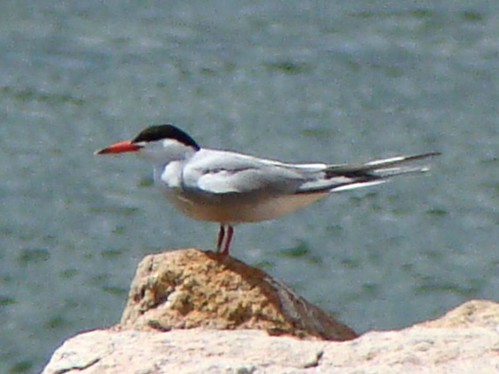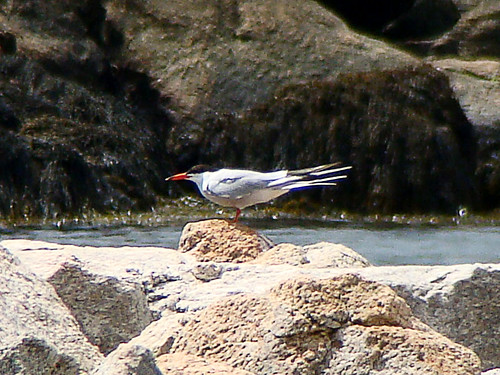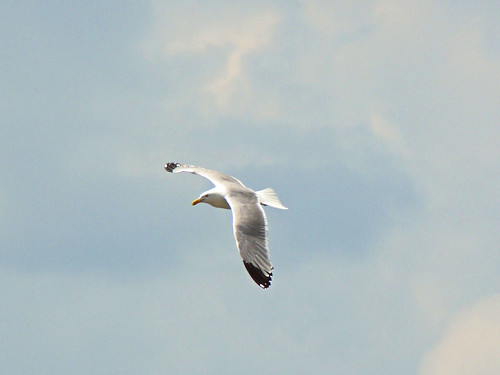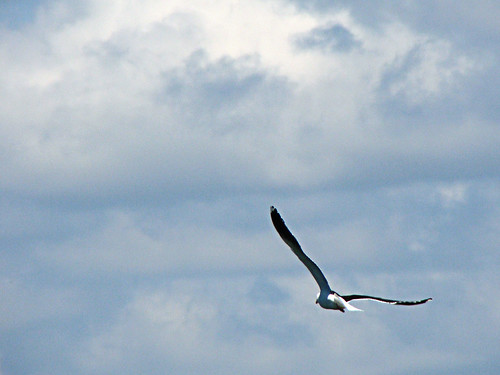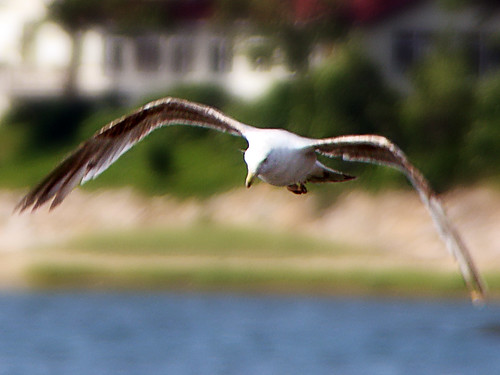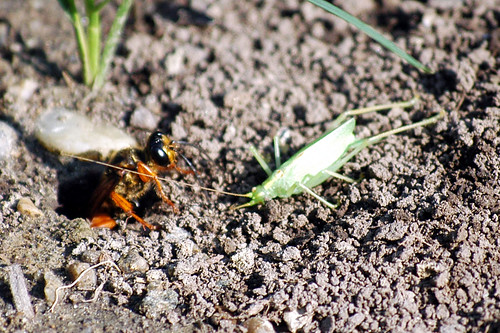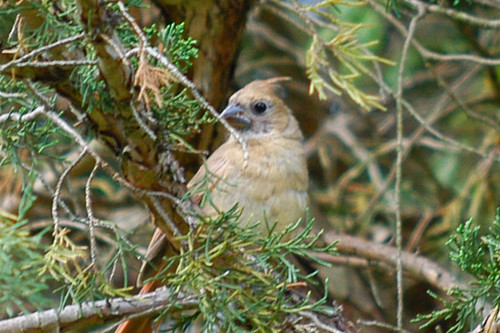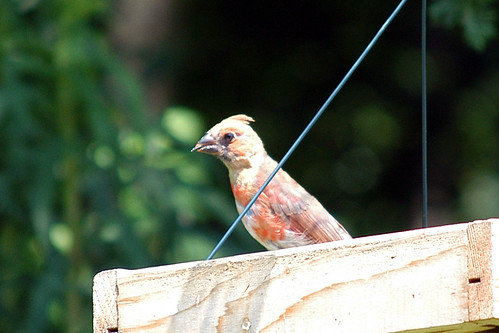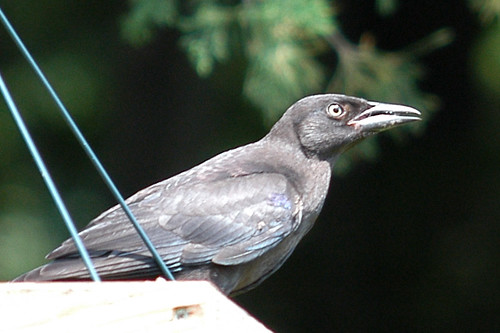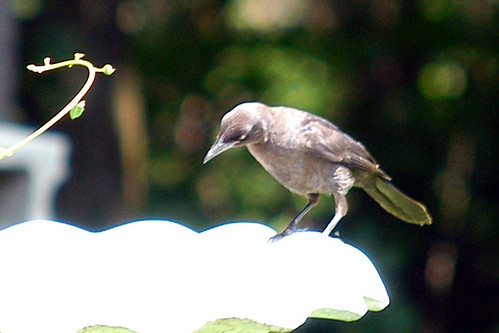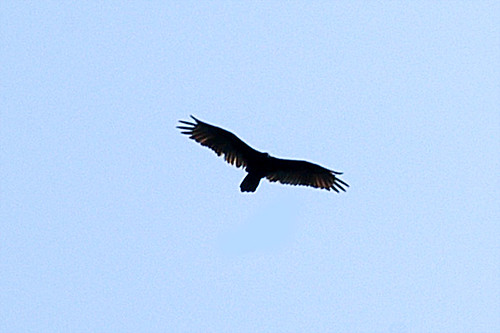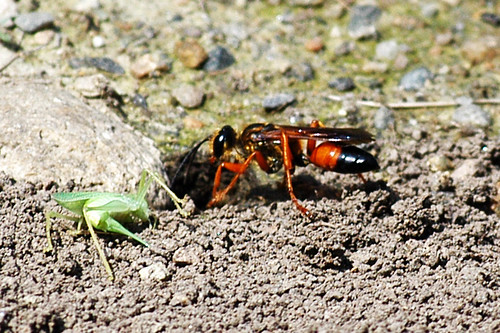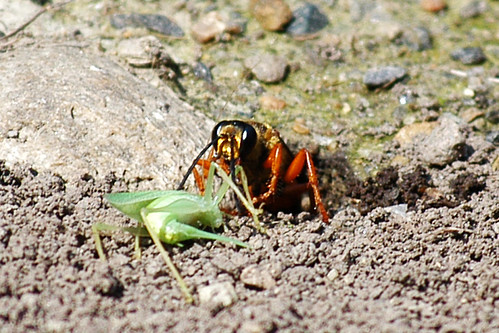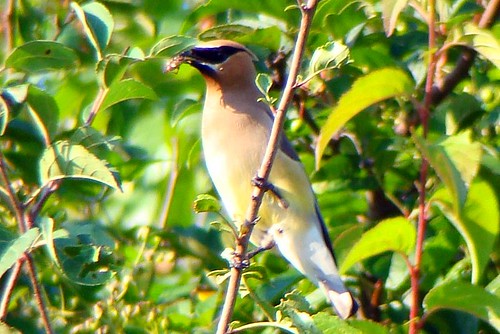
Seeing a Cedar Waxwing at Callahan was a rare treat for me. Other people have them in their backyards, but I haven't seen one since we lived in Sharon, and I only saw one during the thirteen years we lived there!
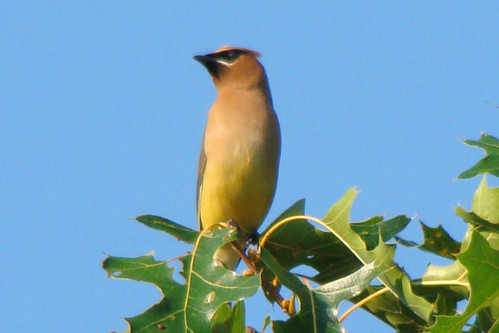
They are such beautiful birds! The subtle, delicate colors shining in the sun and the jet black mask outlined with bright white; its breathtaking!
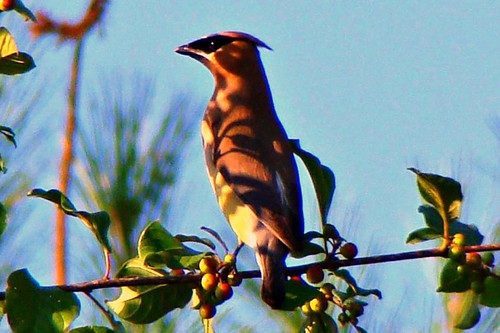
They are gorgeous even without the sunlight. In the deep afternoon shade the colors are hardly noticeable, but the dramatic mask and crest can't be ignored.
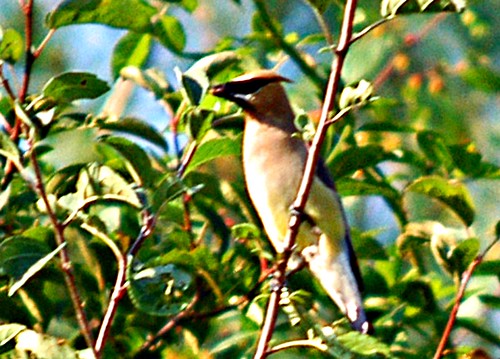
This was my second day using the Nikon D100. Unfortunately, I was too far away for my mediocre lens. I still might have captured a few decent pictures, but I forgot to turn on the Vibration Reduction, too. I got nothing at all. Thank god Tom was was there with the Sony H50 super-zoom! He took every picture but this one, and his is much clearer than mine!
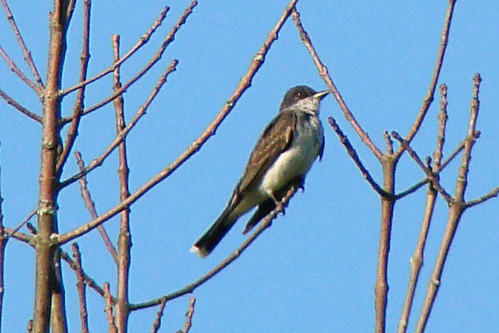
We also had an Eastern Kingbird pose for us at the very top of a nearby tree. This is a typical perch for the Kingbird, who truly believes himself to be king of all he surveys.

This is a good image of a Kingbird's shape, which is similar to most flycatchers. The Kingbird can easily be recognized and distinguished from other flycatchers, however, by the bright white band on the end of his tail and wings. The Eastern Kingbird also has a small red crest, but it is rarely seen.

Farther down the path I heard the sound of a Pileated Woodpecker's call, and then the loud hammering of the Pileated's pecking. I know these sounds well, since I have been trying to glimpse a Pileated for years now. I know there is one that frequents the area bordering the aqueduct near my house. I have heard him (or her) often. I have tried to find her (or him) so many times that I am embarrassed to admit it. I have never seen a Pileated Woodpecker in my life, and I didn't see one at Callahan, either. I saw evidence that one had been there, though. The Pileated Woodpecker is the largest woodpecker we have, and he pecks ENORMOUS holes in trees.
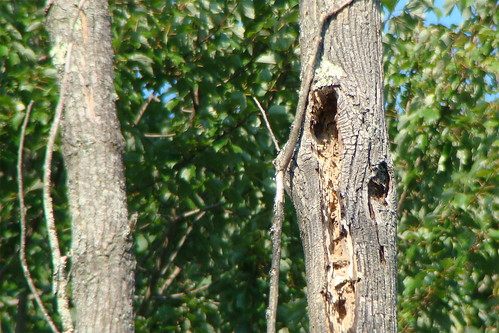
The Pileated tends to peck rectangular shaped holes; if you see such a hole, the Pileated Woodpeckers have been around. You can hear the call of a Pileated Woodpecker at "All About Birds" from the Cornell Lab of Ornithology. (I think they sound like a combination of Woody Woodpecker and a laughing hyena.)

